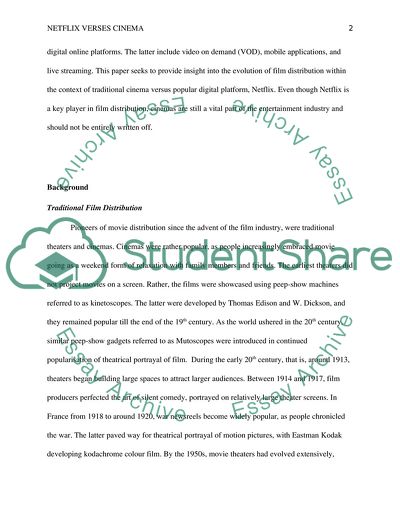Cite this document
(“Netflix - Do We Still Need Cinemas Essay Example | Topics and Well Written Essays - 3000 words”, n.d.)
Retrieved from https://studentshare.org/visual-arts-film-studies/1673345-case-study-netflix-do-we-still-need-cinemas-online-distribution-vs-traditional-distribution-forms
Retrieved from https://studentshare.org/visual-arts-film-studies/1673345-case-study-netflix-do-we-still-need-cinemas-online-distribution-vs-traditional-distribution-forms
(Netflix - Do We Still Need Cinemas Essay Example | Topics and Well Written Essays - 3000 Words)
https://studentshare.org/visual-arts-film-studies/1673345-case-study-netflix-do-we-still-need-cinemas-online-distribution-vs-traditional-distribution-forms.
https://studentshare.org/visual-arts-film-studies/1673345-case-study-netflix-do-we-still-need-cinemas-online-distribution-vs-traditional-distribution-forms.
“Netflix - Do We Still Need Cinemas Essay Example | Topics and Well Written Essays - 3000 Words”, n.d. https://studentshare.org/visual-arts-film-studies/1673345-case-study-netflix-do-we-still-need-cinemas-online-distribution-vs-traditional-distribution-forms.


